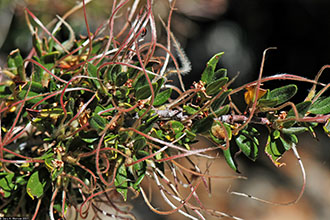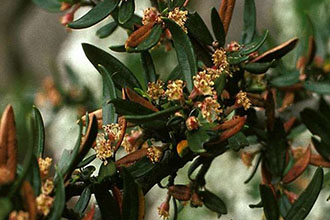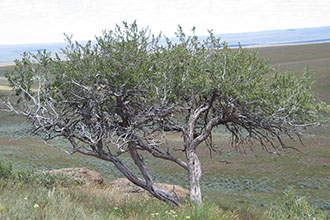Taxonomy: Kingdom - Plantae (plants). Subkingdom - Tracheobionta (vascular plants). Superdivision - Spermatophyta (seed plants). Division - Magnoliophyta (flowering plants). Class - Magnoliopsida. Subclass - Rosidae. Order - Rosales. Family - Rosaceae (rose). Genus - Cercocarpus Kunth. Species - Cercocarpus ledifolius Nutt.
Ecology: Curlleaf mountain-mahogany is widespread in mountainous regious across western North America, and is found at elevations ranging from 600 to 3,000 m. Curlleaf mountain-mahogany functions as a late-seral or a mid-seral species in most communities. Site conditions likely dictate curlleaf mountain-mahogany's place in succession. Curlleaf mountain-mahogany's shade tolerance is low, so if sites can support coniferous species, curlleaf mountain-mahogany may be replaced as conifers dominate the canopy. However, succession proceeds at an "extremely slow" rate in many curlleaf mountain-mahogany communities, and long-term studies of successional change in curlleaf mountain-mahogany communities are lacking. This species can grow very old; one individual was found to be an estimated 1,350 years old (Schultz and Tueller 1990), making it one of the longest living angiosperm species. Curlleaf mountain-mahogany occupies habitats with low precipitation and extreme temperature ranges. Curlleaf mountain-mahogany is found on open slopes in the Utah Forest Dynamics Plot, near the upper end of its reported elevation range.



